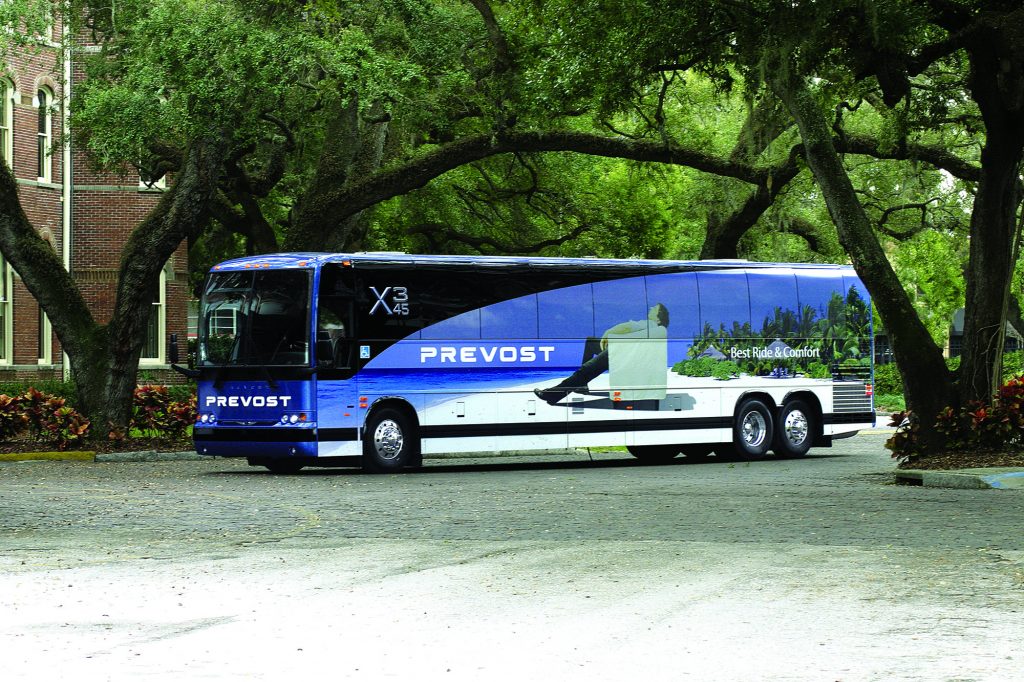Since the onset of the pandemic-related shutdowns in March 2020, the transportation industry has been decimated. This is especially true for the executive sedan and limousine companies that rely on corporate travel and related contracts with air-lines and hotels. By January 2021, ridership for the executive sedan (black cars) and limousine sectors were down by 53 percent and 75 percent, respectively, compared to the same month one year earlier, in comparison to ride-hailing services which saw a decline of 42 percent over the same period.
At the outset of the pandemic, the business world expected, and certainly hoped, that the fourth quarter of 2020 would bring about a gradual return for business. Instead, the resurgence of COVID-19 resulted in the continuation of travel restrictions, the cessation of in-person instruction in many schools and the scaling back of business operations, especially for restaurants and hotels. Even with the expectation that we will see the various COVID-19 vaccines administered to essential workers and all willing persons 16 years of age or older in the first half of 2021, the recovery to pre-pandemic levels of business will likely not take place for some time. As a result, limousine, bus and other transportation company leaders continue to adjust their business plans to reflect that the recovery will be slow and painful.

In this article, the options that companies have for financing under the most recent COVID-19 relief package will be explored and also steps to prepare for mergers and acquisitions will be discussed, as well as bankruptcy filings and options. Now could be the time to assess the past, present, and future, to tighten operations, develop strategic partnerships and new business lines, engage in joint ventures to consolidate or outsource operations and possibly contemplate retire-ment or passing the torch to others.
COVID-19 Assistance Grants & Loans
On December 27, 2020, the Economic Aid to Hard-Hit Small Businesses, Nonprofits and Venues Act (Economic Aid Act) was signed into law, with several updates to the loan programs offered by the U.S. Small Business Administration (SBA). First among these for consideration by transportation company operators would be the Paycheck Protection Program (PPP) loans that were funded with $284 billion, and with significant updates and enhancements in the Economic Aid Act. On March 11, 2021, the American Rescue Plan Act of 2021 – a $1.9 trillion relief package – was signed into law, and that legislation included an additional$7 billion in PPP funding.

The original CARES Act – enacted on March 27, 2020 – created and funded the original PPP, which provided companies, sole proprietors and independent contractors with SBA-backed loans to be used to retain employees and pay certain non-pay-roll costs. The PPP loans may be 100 percent forgivable based on the use of the loan proceeds. According to SBA data, the Transportation and Warehousing sector received 229,565 loans (3.34 percent of all PPP loans), totaling $17,522,942,736, as of August 8, 2020, when the first round of the PPP loan program expired.
The SBA and U.S. Treasury Department released loan application forms for the rebooted PPP loans on January 8, 2021. The PPP loan program reopened on January 11, 2021, for participating community financial institutions (CFIs) that serve minority-owned and women-owned businesses to begin submitting PPP loan applications for First Draw PPP loan borrowers. On January 13, 2021, the Second Draw PPP began. In its guidance, the SBA indicated that the PPP would open to all lenders a few days after the opening for CFIs, and fully reopened the PPP loan portal on Tuesday, January 19, 2021 to all participating lenders.5 If your transportation company is considering a PPP loan, first-time and second-time PPP borrowers may receive a loan amount of up to 2.5 times their average monthly payroll costs (with a cap per employee of $100,000 on an annualized basis) in 2019, 2020 or the year prior to the loan. The maximum loan amount is $10 million for First Draw PPP loan borrowers and $2 million for Second Draw PPP loan borrowers.
Existing PPP borrowers that did not receive loan forgiveness by December 27, 2020, may: (1) reapply for a First Draw PPP Loan if they previously returned some or all of their First Draw PPP Loan funds; or (2) under certain circumstances, request to modify their First Draw PPP Loan amount if they previously did not accept the full amount for which they are eligible. A borrower is generally eligible for a Second Draw PPP Loan if the borrower: (a) previously received a First Draw PPP Loan and will or has used the full amount only for authorized uses; (b) has no more than 300 employees; and (c) can demonstrate at least a 25 percent reduction in gross receipts between comparable quarters in 2019 and 20207. For example, a limousine company with gross receipts of$50,000 in the second quarter of 2019 and gross receipts of $30,000 in the second quarter of 2020, has experienced a revenue reduction of 40 percent between the quarters, and is therefore eligible for a Second Draw PPP loan (assuming all other eligibility criteria are met).
PPP borrowers can have their first-draw and second-draw loans completely forgiven if the funds are used for the following eligible costs: payroll, rent, covered mortgage interest, utilities, covered worker protection and facility modification expenditures, covered property damage costs, covered payments to suppliers, payments for business software or cloud computing services that facilitate business operations, product or service delivery and numerous back-office functions. To be eligible for full loan forgiveness, PPP borrowers must spend no less than 60 percent of the PPP loan funds on payroll over a covered period of their choice between eight and 24 weeks. Transportation companies should be aware that the U.S. Internal Revenue Service (IRS) will allow businesses that had their PPP loans forgiven to write off expenses paid for with that money – after Congress reversed the prior IRS policy in the recent legislation. As of this writing, May 31, 2021, was the last day to apply for either a First Draw or Second Draw PPP loan.
In addition to the PPP loans, the SBA has other loan programs that might be more generous than traditional business financing. On December 30, 2020, the SBA announced it has extended the deadline to apply for the Economic Injury Disaster Loan (EIDL) program for the COVID-19 pandemic disaster declaration to December 31, 2021 (pending the availability of funds). These SBA loans provide working capital funds to small businesses. These loans are offered at a fixed 3.75 percent interest rate for small businesses, with a negotiable term of up to 30 years, and an automatic deferment of one year before monthly payments begin. As of December 30, 2020, the SBA reported that it had already approved $197 billion in these low-interest loans. For transportation companies, the EIDL program offers an advance/grant of $1,000 per employee, for a maximum of $10,000. Prior to the passage of the Economic Aid Act, the EIDL grant amount would be deducted from any PPP loan forgiveness amount for that business. However, the recent legislation reversed that provision, and any EIDL grant amount will not be factored into any PPP loan forgiveness calculation.

Provisions in the Economic Aid Act now allow businesses up to eight months of principal and interest payments forgiven for Section 7(a) and 504 Microloans from the SBA. A Section 7(a) loan, which is received through an SBA lender, is a loan that can be used for working capital, equipment, inventory and business acquisitions. Businesses may borrow up to $5 million at fixed or variable interest rates, as long as they have fewer than 500 employees and less than $7.5 mil-lion in average annual receipts. The bor-rower will have to be a for-profit business based in the United States and not be delinquent on any debt owed to the government. Depending on how the business intends to use the funds, the loans will have a term from seven to 25 years. Additionally, the Economic Aid Act temporarily reduces or eliminates certain loan fees for the borrower.

The SBA’s 504 Microloan program is geared more toward economic development and job creation. It is available to purchase commercial real estate, existing buildings and equipment that will help a business grow. These loans also have a $5 million limit and have similar requirements to a Section 7(a) loan. However, interest rates for these loans are fixed, and the loans have a term from 10 to 20 years depending on the nature of the loan. The Economic Aid Act temporarily eliminates the 504 Microloan fees.
A business with an existing SBA Section 7(a) or 504 Microloan could receive up to eight months of forgiveness of principle and interest payments, all capped at $9,000 per month. If a business applies for a new SBA Section 7(a) or 504 Microloan, and is approved before September 20, 2021, then, the first six months of principle and interest (up to $9,000 per month) is also forgiven. Those with an existing PPP loan may apply for a Section 7(a) loan or a 504 Microloan.

Given the full or partial forgiveness avail-able from the Economic Aid Act and the low interest rates and flexibility with terms (except for the PPP loans), transportation companies may wish to seek one or more of these SBA-backed loans as part of their 2021 financial planning. The law firm has already worked with many transportation clients on these SBA-backed loans, and this relief has helped to stave off layoffs and pay non-personnel costs through the COVID-19 relief programs. Given the dire circumstances faced by many small companies, pro bono (free advice) to many mobility companies and even their drivers during these difficult times was offered. What is important though, is to think about when the money runs out – and to start thinking of and implementing a game plan for re-opening and the potential business environment in the new post-pandemic normal. There are many options, some of which are discussed in the remainder of this article.
Should I Buy or Sell? Either Way, Get Your Shop in Order
Even with these SBA-backed loans avail-able to transportation companies, such loans often function as stopgap measures as the pandemic affects revenues and business development. The solution may instead come from strategic transactions such as selling the company, buying another company synergistic with the existing business, seeking an equity investment, or even entering into a joint venture. With so many companies in distress and a reduction in the overall market, the pace for mergers and acquisitions will naturally quicken.
Having handled many transportation company deals over the years as counsel for buyers, sellers and investors in mergers, acquisitions, joint ventures and investments, we have seen how complex and time consuming such transactions and the related “due diligence” process can be – even for transactions with smaller dollar values. Clients often prepare simple term sheets for such transactions with the expectation that it will be easy to quickly complete the deal. Unfortunately, that is often not a realistic expectation.
The most frequent source of delay is the seller’s failure to prepare the target company for sale in advance and deal with risks, liabilities and other matters of concern to buyers and investors, such as issues with stock ownership, permits and licenses, intellectual property rights, tax matters, debts and guarantees or pending lawsuits. When these matters are first identified in the course of the buyer’s or investor’s due diligence investigation and raised in the middle of negotiating a transaction, that often results in extensive delays, causes the deal to lose momentum and some-times even kills the deal.
Due Diligence and Disclosure Schedules
Due diligence is an important aspect in any transaction and is an extensive process undertaken in order to thoroughly and com-pletely assess the target company’s business, assets, liabilities, capabilities and financial performance. Part of this will be business and financial due diligence, in which the buyer will review the target company’s financial statements, accounts receivable and accounts payable, and other books and records to determine issues such as:
- Does the business have healthy cash flow?
- Where are the sources for the revenue stream?
- How is the target company calculating its revenues and earnings? Should there be adjustments?
- How reliable are the target company’s financial projections?
- What are the target company’s liabilities? Are there any hidden liabilities?
Checklist for legal review of target com-pany contracts: The buyer or investor will have its legal counsel review and prepare a summary report of the target company’s contracts to answer questions, such as:
- Does the target company have key customer or business partner contracts that account for significant portions of its revenue stream? Do these contracts reasonably limit the company’s warranties and liability risks?
- Does the target company have leases, software licenses or other vendor contracts that it depends on for its key assets, systems and rights? Do the contracts convey the ownership and rights that the company purports to have?
- Have employees signed contracts assigning their business intellectual property rights or agreeing to confidentiality, non-solicitation and/or non-competition covenants?
- Has the company acquired other businesses or entered into joint ventures? What were the key terms?
- When will these contracts expire? Can they be terminated voluntarily and/or for cause?
- Do the contracts have restrictions on assignments, changes in control or other transactions that would be triggered by the contemplated sale transaction?
Checklist for review of target company’s records: The buyer or investor and its legal counsel also customarily undertake other legal and operational due diligence, review-ing the target company’s books and records to identify issues, such as:
- Are the company’s organizational documents (articles of incorporation, bylaws, operating agreements, board meeting min-utes, stock records, etc.) complete?
- Have employee stock options and other equity grants complied with tax laws, including requirements for deferred compensation (e.g., IRC Section 409[A])15, incentive stock option status, qualified profits interests and Section 83(b) elections?
- Is the business in good standing and up to date on its taxes and state filings?
- Are there complete employee files, including as to employment eligibility status? What are employees’ salaries, bonuses, commissions and benefits?
- Is there an employee handbook? What are the company’s employee policies?
- Are any employees inaccurately characterized as independent contractors or as exempt employees under the Fair Labor Standards Act?
- Does the target company have any employee benefit plans or retirement plans?
- Does the target company have any registered or unregistered intellectual property(e.g., trademarks or patents)? What is the status of any applications or registrations for such intellectual property?
- Does the company have any pending or threatened litigation?
- Does the company have any environmental hazards or violations?
The buyer or investor will also need to review and understand any permits or business licenses that are required for the target company to operate and the status of those licenses. This includes operating licenses with federal, state and local licensing agencies. Even if the licenses are in good standing, are they transferrable? Assuming they are transferrable, what is the process for regulatory approval to assume a license as the new owner? Also, are there any other necessary governmental or agency approvals required in order to transfer the business (including federal antitrust filings under the Hart Scott Rodino Antitrust Improvements Act of 1976)?
The buyer or investor and its tax advisors will also want to assess the tax status of the target company by reviewing its federal, state, local, foreign and other tax returns and records. For example, has the target company timely filed all tax returns and paid all taxes due (including all income taxes, capital gains taxes, sales and use taxes, transfer taxes, franchise taxes, payroll taxes, etc.)?Has it been filing returns and paying taxes in all jurisdictions where it is legally required to file? Has it claimed deductions that it was not entitled to under tax laws? Has it properly withheld payroll taxes from employees?Improperly characterized any employees as independent contractors?
Even if the buyer or investor does not conduct careful due diligence on these matters, the definitive acquisition agreement will typically have a robust set of representations and warranties that will require the seller and its legal counsel to carefully review these materials and prepare schedules that set forth various lists, summaries and disclosures regarding these and other matters. Accordingly, any problems will come to the attention of the buyer or investor sooner or later. When they do, that can cause delays, bring negotiations to a halt and sometimes even kill deals.
Accordingly, if you are looking to sell your company or seek investors in the near future, your business should be reviewed by and discussed with legal counsel now, with an eye towards identifying and resolving or mitigating weaknesses and risks where possible. This will help maximize company value, as well as the likelihood of closing any future deal that you may secure with a buyer or investor.
Transaction Structure – Asset and Stock Purchases & Tax Implications
The information discovered in the due diligence process will also help to structure a sale transaction, such as an asset purchase stock purchase, or merger.
Asset purchase deals can be structured so that the buyer only acquires the target company’s assets and not most or all of its liabilities. This structure is generally preferred by buyers, and it is especially desirable to them when there are unusual or concerning liabilities identified in due diligence. In asset purchase deals, an important part of the deal structure and negotiation will be determining which, if any, of the target company’s liabilities will be assumed by the purchaser and which will remain the sole responsibility of the seller. Negotiating the indemnification provisions regarding the above-referred liabilities will be critical to protecting each party’s expectations. Although asset purchase structures will generally limit the liabilities assumed by the buyer, there are various exceptions to this, such as environmental and pension liabilities, as well as liability imposed under legal doctrines of successor liability. In some cases, an asset purchase transaction is not a viable deal structure, often due to regulatory or contractual constraints. Such trans-actions are more complex and may take more time to close, particularly if the target company has numerous contracts that can-not be assigned without the counterparty’s prior written consent (a common contractual term).
Sellers generally prefer that the trans-action be structured as a stock or member-ship interest purchase, which is simpler. However, these structures do not enable a buyer to exclude any liabilities of the acquired business, and so it will be even more important to the buyer to determine and understand the liabilities of the target company. Stock or membership interest purchases require all equityholders to sign the purchase agreement, which may be difficult or impractical for companies with a large number of equityholders or recalcitrant equityholders. In such cases, a merger structure may be preferable, as it only requires the transaction agreement to be signed by the target company and then the sale to be approved by a majority of the board of directors (or similar governing body) and a majority equityholder vote, subject to any special approval rights set forth in the target company’s governing documents. A merger effectively forces a sale by all equityholders, but it may leave dissenting minority holders with “appraisal rights” that allow them to challenge in court the value paid in the merger, and perhaps receive some other amount. Merger structures also add some complexities to the deal documents, and the requisite equityholder vote may require advance notice and complex deal summary and disclosure materials.
Furthermore, when structuring a sale transaction it will be important to minimize taxes to the maximum extent possible. While asset purchase transactions can provide certain tax benefits for buyers, they may carry adverse tax implications for sellers, particularly if the target company is a corporation (in which case there may be two layers of taxation – one paid by the target company and a second paid by its stockholders). A stock or membership interest purchase has only one layer of tax, and it is generally more tax favor-able to the seller. The tax allocation of the purchase price is also an important analysis in any transaction, and it may provide certain tax benefits.
By evaluating the various structuring alternatives available before undertaking a formal agreement and identifying your preferred structure, you can increase the chances of setting the other party’s expectations at the onset of the process, so as to ensure that the transaction is structured in a tax-efficient manner to you.
Valuation
From the firm’s experience, when deter-mining a price for the sale of a business, it is important to have an accurate and detailed basis for valuing the target company, informed by financial due diligence. There are different methodologies for conducting a valuation. The method chosen will depend on the information at your disposal, as well as the nature of the business and the industry. Some common valuation methodologies include the following:
- Asset-based methods start with the book value of a company’s equity. The liquidation value is the net cash that a business would generate if all of its liabilities were paid off and its assets were liquidated today. This liquidation value is more of a baseline, as it does not account for growth potential or future cash flows.
- Discounted cash flow analysis uses the inflation-adjusted future cash flows to project a value for the business. This valuation methodology is most suited to established and cash-generative companies with long-term business prospects.
- Valuations based upon multiples of revenue are arguably the simplest. It is a popular quick-form method to expeditiously value a company and can be a useful metric when comparing companies with different profit levels but similar characteristics in terms of margins, products, markets and competition.
- Valuations based upon multiples of EBITDA, a measure of the financial performance of a company, are also very popular. This enables the comparison of earnings of similar companies while excluding any distortions that result from interest, taxation, depreciation or amortization.
- If only a portion of the target company is to be sold, discounts may also apply for lack of control (if a minority interest is sold) and/or for lack of marketability (reflecting the difference in liquidity between closely held securities and publicly traded securities).
A combination of these or a variety of other valuation methodologies may ultimately be used to settle on the price for the target company. These methodologies are of course only a starting point. Sophisticated buyers will also take into account other value considerations, including non-recurring revenue and expenses; market size, competitive landscape and barriers to entry; competitive advantages from proprietary technology, intellectual property rights or strong brand recognition and loyalty; businesses scalability costs; customer concentration risks, payment history and satisfaction; contractual restrictions on the business; and debt and other liabilities.

Finally, the results of the legal due diligence described above will help identify weaknesses, may significantly increase the risks of the business and may diminish the value to a prospective buyer. It is important to have skilled professionals guide the acquiring company through the valuation process and address pitfalls with assessing the value of the target company.
Some Final Thoughts on M&A Due Diligence
Right now, it is very difficult for a company in the transportation sector given the impending uncertainty of when and to what extent business travel and other forms of mobility may return and whether there will be modal shifts affecting the long-term viability of a company. With such uncertainties, not only is it difficult to develop a proper valuation for a transportation business as a whole, but even the individual component assets of a company – such as real estate, vehicles as well as intellectual property – may be difficult to value given the pandemic.
How can a company even think about buying, selling, merging or engaging in a joint venture? Rather than thinking about that end game, now is a good time to begin the process of identifying and cleaning up risks, issues and problems that would come up in a due diligence exercise, so as to ensure that the business is appealing to prospective buyers and its value is maximized.
You may also want to consider taking measures to consolidate operations and potentially outsource responsibilities and functions. Although it is difficult to go down that road if your company has accepted PPP funds and is required to bring back employees, that should not stop you from thinking about making changes once those obligations end. Anything that can be done now to make the balance sheet look better will help your ability to stay in business, as well as your company value.
Should My Company File for Bankruptcy? If So, When and What Type?
There are two primary types of business bankruptcy cases, Chapter 7 and Chapter 11. Below is a brief overview of Chapter 7 and Chapter 11.
Liquidation – Chapter 7 of the Bankruptcy Code
Chapter 7 of the Bankruptcy Code provides for the orderly and equitable liquidation and distribution of non-exempt assets of the debtor. In exchange, an individual debtor will receive a discharge. Corporations and partnerships, which are not individuals under the Bankruptcy Code, do not receive discharges under Chapter 7. Instead, the corporate shell is left with debts, but no assets. A corporation seeking a discharge must file Chapter 11 and confirm a Chapter 11 plan.

At the commencement of a Chapter 7 case, a “panel” trustee is appointed by the Office of the United States Trustee (the “U.S. Trustee”) to serve as Chapter 7 trustee of the debtor’s bankruptcy estate. Pursuant to Section 704 of the Bankruptcy Code, the Chapter 7 trustee takes over full control of the debtor’s assets and is charged with collecting and reducing to money the property of the debtor’s estate and closing such estate as expeditiously as is compatible with the best interests of the parties in interest. Where the debtor is a business entity, the trustee may seek authorization of the Bankruptcy Court to temporarily operate the debtor’s business if it would be in the best interest of the estate.
Reorganization – Chapter 11 of the Bankruptcy Code
The purpose of Chapter 11 is to permit the debtor to continue to operate while it reorganizes its business and capital structure pursuant to a court-approved plan of reorganization. The Chapter 11 debtor is known as a “debtor in possession” because, unlike in a Chapter 7 case, the debtor remains in possession of the estate assets. Chapter 11 can also be used when management seeks to conduct an orderly liquidation of the debtor’s business, including a sale of substantially all of the debtor’s assets under a Chapter 11 plan or a sale outside of a plan pursuant to section 363 of the Bankruptcy Code, because it avoids the appointment of a panel trustee and the “fire sale” climate. Whether used for a reorganization or a liquidation, Chapter 11 is a valuable tool that allows a debtor to preserve its business and thereby maximize value for all creditors. A highlight of some of the key provisions of Chapter 11 is below.
Procedural Overview of Chapter 11 Proceedings
The goal of a Chapter 11 case is the con-sensual confirmation of a plan of reorganization or plan of liquidation. As discussed in further detail below, Chapter 11 plans must satisfy the requirements of the Bankruptcy Code to be approved or confirmed.21 After the plan is confirmed, the debtor is required to make plan payments or distributions and is bound by the plan’s provisions. The confirmed plan creates new contractual rights and can create, replace or supersede pre-bankruptcy contractual rights. Both pre-petition and post-petition creditor claims are satisfied as set forth in the plan. Upon consummation of the plan, the debtor receives a discharge of any debt that arose before the date of confirmation. However, confirmation of a Chapter 11 plan does not discharge the debtor if the plan is a liquidation plan.
Under Chapter 11, the debtor is authorized to and generally continues to operate the business in the ordinary course without bankruptcy court approval. Pursuant to Section 1104 of the Bankruptcy Code, on the request of a party in interest, the court shall appoint a Chapter 11 trustee for cause, including fraud, dishonesty, incompetence or gross mismanagement, either before or after the bankruptcy filing, or where appointment of a trustee is in the best inter-est of the parties in interest. Generally, courts will not appoint a Chapter 11 trustee absent a showing of fraud or gross mismanagement.
Key Benefits of Chapter 11
There are a number of significant benefits to Chapter 11. Highlights of some of the key benefits are below:
The Automatic Stay: Debtors file for bankruptcy protection for myriad reasons, but a principle reason is that the filing provides the debtor with immediate protection from a wide variety of collection efforts to collect on debts that arose before the bankruptcy petition was filed. Pursuant to Section 362 of the Bankruptcy Code, the filing of a Chapter 7 or Chapter 11 bankruptcy petition (as well as petitions under certain other chapters of the Bankruptcy Code) operates as a stay, applicable to all entities, of a wide range of acts to collect on debts that arose before the bankruptcy petition was filed. The automatic stay is intended to provide a debtor with a breathing spell during its bankruptcy case. If a creditor violates the automatic stay, a bankruptcy court may hold the creditor in contempt of court and award the debtor compensatory damages. In addition, where the violation is willful, the bankruptcy court may award punitive damages.

Sale-Related Provisions of Chapter 11: Although a debtor is authorized to operate its business, it may not sell, use or lease property of the estate outside of the ordinary course of business without court approval. A sale of assets outside the ordinary course of business, including a sale of substantially all of a debtor’s assets, may be approved as part of a Chapter 11 plan under Section 1123 of the Bankruptcy Code or prior to a plan under Section 363 of the Bankruptcy Code. When assets are sold in bankruptcy, the assets are typically sold free and clear of all liens, claims and interests with any liens and interests attaching to the proceeds of the sale with the same priority they had at the time of the sale.
Advantages of Effectuating a Sale through Chapter 11:
There are a number of key advantages to effectuating a sale through a Chapter 11 bankruptcy process. In fact, many savvy buyers often require that a sale be effectuated through a Chapter 11 bankruptcy process to take advantage of these benefits. The most notable of these benefits include:
- A reduced risk of later challenges, including a fraudulent conveyance.
- This form of sales is favored by directors who have no financial stake in the game.
- Assets can generally be sold free and clear of liens, claims and encumbrances (including successor liability claims) and over objections by shareholders and creditors.
- Executory contracts in default can be cured, assumed and assigned, even if the contract provides otherwise (there are some exceptions, such as certain intellectual property contracts).
- Executory contracts can be rejected, which gives purchasers the ability to “cherry-pick” which contracts they want to acquire.
- Avoidance of transfer taxes if sold through a plan, which can be a significant benefit, especially where real estate is involved.
Small Business Debtors – Subchapter 5 of Chapter 11 of the Bankruptcy Code
Special rules also apply with respect to small business debtors. As of February 20, 2020, newly-enacted subchapter 5 of Chapter 11 became effective. Subchapter 5 modifies certain longstanding provisions of Chapter 11 with respect to certain small business bankruptcy cases. The recently-enacted rules applicable to small business debtors are very favorable to a debtor and debtors will try to find ways for the small business bankruptcy rules to be made applicable to them. Subchapter 5 of Chapter 11 currently applies to debtors with aggregate non-contingent liquidated secured and unsecured debts not more than a specified threshold. Until March 27, 2020, the thresh-old was approximately $2.7 million (excluding debts owed to insiders and affiliates). However, on March 27, 2020, the CARES Act went into effect, which increased the threshold to $7.5 million. This increased threshold for the amount of debt to qualify for Subchapter 5 was scheduled to revert back to $2.7 million; however, the COVID- 19 Bankruptcy Relief Extension Act of 2021 was enacted on March 27, 2021 and extended for one year. Therefore, eligible financially distressed businesses should give serious consideration to taking advantage of the new law before the program reverts back to the significantly-lower threshold in March 2022.

Differences/Benefits of Subchapter 5 over traditional Chapter 11: Subchapter 5 of Chapter 11 provides numerous advantages when compared to a traditional Chapter 11 bankruptcy filing, including the following:
- The trustee will typically appoint a small business trustee, and there will be no creditors’ committee – which is more direct and avoids the costs of a creditors’ committee.
- In most cases, under Subchapter 5, the debtor transportation company will continue to manage the business operations.
- In a Subchapter 5 case, the “absolute priority rule” does not apply, which generally requires that creditors be paid in the order of their priority. Instead, Subchapter 5 allows equity holders to retain their equity even if unsecured creditors have not been paid in full.
- There is no obligation to use excess post-bankruptcy petition income for 3-5 years to fund plan payments to creditors if fully consensual.
- There is no obligation to employ and pay fees of Subchapter 5 trustee to make plan payments if fully consensual.
- Administrative Claims can be paid over time rather than all at once upon plan confirmation, as is the case in a traditional chapter 11 case. This change will be of particular benefit to any transportation company-debtor with significant administrative claims.
- There also may be a greater ability to pay contract and lease cure costs over time in connection with a contract and lease assumption.
Procedural Benefits: There are also several procedural differences/benefits of Sub-chapter 5 over traditional Chapter 11, including
- There is no obligation to file a separate disclosure statement in connection with the Chapter 11 plan, which saves time and costs.
- The debtor retains exclusive ability to file and confirm a Chapter 11 plan and creditors have no ability to strip the debtor of that right. In a traditional Chapter 11, the debtor retains the exclusive right to file a plan for only a limited timeframe and other parties can attempt to shorten that time-frame.
- The trustee is accountable for all property received, will examine proofs of claim, controls plan distributions if nonconsensual plan, and has a fee equal to five percent of receipts.
- Unsecured creditors’ committees will be very rare in Subchapter 5 cases. The committee can result in considerable cost savings given that a debtor typically pays for all of the fees and expenses of the Committee’s professionals, including attorneys and financial advisors.
Strategic Advantages: For Subchapter 5 cases there are numerous strategic consid-erations for a transportation company-debtor, including
- The ability to pay down debt prior to a filing to become eligible for subchapter 5.
- The transportation company-debtor may spin off certain assets/liabilities into a separate legal entity in order to make one or both entities eligible for subchapter 5.
- There is a greater opportunity to propose a sale of all assets to a favored party without a bidding process or creditor con-sent. Traditional Chapter 11 limits the ability of a debtor to do so under a chapter 11 plan because (i) creditors can seek to terminate plan exclusivity and submit a completing plan, and (ii) at least one impaired creditor class must approve the plan even when it is a “cram down” plan.
What Do I Do Next? Join the Opportunity Registry
Last year, when the PPP loan deadline was extended to August 8, 2020, the transportation sector has some early hep available in the pandemic. Even so, with the diminished revenues continuing into 2021, we have seen some companies already shut operations or file for bankruptcy. new funding for PPP loans (including the availability of a second draw), and the enhancements to the other SBA loan programs dis-cussed above, can provide transportation companies some needed financial assistance. This may allow transportation companies to at least temporarily – meet payroll and other costs to postpone any decision regarding a total closure or a bankruptcy filing. How-ever, these are only stopgap measures and everyone must be thinking several steps ahead right now. If there is no comeback before the end of 2021, and if your business is not primed for buying, selling or other options, it may be too late to start the process and your options will be limited.

As an alternative, and based upon the above, transportation companies may want to consider the merits of a merger/acquisition or sale, given that no one is able to adequately predict the market in the near-term. Even with a comprehensive vaccination program, work-travel habits may be altered for some time. The idea of adjusting business plans to account for the “new normal” should already be underway. Many companies have already arrived at that fork in the road. They should take it – after applying for the PPP loans and other assistance – to travel the road into 2021, 2022 and beyond.
If your company is not involved in networking with others and you feel like you are on an island – especially with many trade conferences not being able to be held in person this past year –you are not alone. The firm represents large, small and middle market mobility companies that are interested in buying, selling, merging and engaging in partnerships with others in light of the new post-pandemic economy. A confidential inventory of clients and other contacts in the industry is kept – which includes whether the company is interested in buying or selling, and what the para-meters are – so that the firm serves as matchmaker. Non-disclosure-agreements (NDAs) are typically issued, and given the extensive contacts around the country and the world, your deal could be waiting right here. There is no obligation to commit to anything, and all inquiries or expressions of interest will remain confidential. Just pick-up the phone, send an email, and help and opportunity is on the way.

